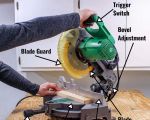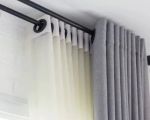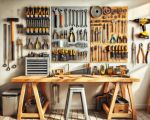How to Select the Right Workbench for Your Needs
When I first started my DIY projects and home improvement tasks, I quickly realized that having the right tools was essential. But one of the most overlooked tools was the workbench. It was only after a few frustrating attempts at setting up an adequate workspace that I understood how crucial it is to select the right workbench. A proper workbench not only provides a stable and organized place to work, but it can also significantly enhance your productivity and ensure safety while you work. In this article, I will share what I have learned about selecting the right workbench for your needs, with tips that I wish I had known earlier.
1. Understanding Your Space and Work Area
The first thing I learned when selecting a workbench was to assess the space where it would be placed. A workbench is often the centerpiece of a workshop, and it’s important to ensure that it fits well in your designated work area. I had initially overlooked this step and bought a large workbench only to find it took up too much room, leaving me with limited space to move around.
Measure your available space and consider the following: 1. The size of the workbench: How much space do you need for your projects? For example, if you are working with larger pieces like wood or metal, you’ll need a larger surface. 2. Mobility: If you have limited space, consider a portable or foldable workbench. 3. Accessibility: Ensure that your workbench is placed in a way that gives you easy access to your tools and equipment.
Once I learned to measure my space properly, I was able to choose a workbench that didn’t overwhelm the room and still provided enough space for my tasks.
2. Load Capacity and Durability
Choosing the right workbench depends largely on the kind of work you intend to do. Some tasks, such as woodworking or metalworking, require a workbench that can support heavy loads. This is an aspect I hadn’t paid enough attention to in the beginning. I purchased a light-duty workbench that wasn’t equipped to handle heavier tasks, and it ended up being unstable when I tried to work with larger materials.
To avoid this mistake, ensure the workbench you select has a sufficient load capacity for your needs: 1. For light-duty tasks, a workbench with a load capacity of around 200-300 pounds may suffice. 2. For heavier tasks like woodworking or automotive work, look for a workbench with a load capacity of 500 pounds or more. 3. Material: Solid wood, steel, or metal workbenches tend to offer greater durability and stability than plastic or lightweight materials.
As I progressed in my projects, I found that having a sturdy and reliable workbench made my work easier and much safer, so I highly recommend choosing a bench that matches the type of work you plan to do.
3. Workbench Height for Comfort and Ergonomics
When I first started out, I didn’t think too much about the height of my workbench. After working on it for a while, I realized that a bench that was too high or too low could lead to back pain and discomfort. Ergonomics play a big role in selecting the right workbench, and it’s important to choose one that suits your height and the tasks you perform.
Here are some tips for choosing the right height: 1. Standard workbench height is usually around 34-36 inches, but if you are taller, a workbench at 38 inches might feel more comfortable. 2. If you plan to do tasks that require sitting, consider getting a lower workbench or an adjustable one. 3. Ensure that the workbench height allows you to work without leaning forward excessively or straining your back.
By adjusting the height, I was able to work for longer periods without discomfort, and this greatly improved my overall experience in the workshop.
4. Storage and Organization Features
Another feature that greatly improved my workspace was the addition of storage options. Over time, I accumulated tools and accessories that cluttered my workspace and slowed me down. I realized that having a workbench with built-in storage or a modular design would help me stay organized and efficient.
Consider these features when selecting a workbench: 1. Built-in drawers or shelves to store tools and materials. 2. Pegboards or tool racks for easy access to frequently used tools. 3. Modular designs that allow you to add storage units or accessories later as your needs grow.
Once I had a workbench with adequate storage, I found that I could easily find tools, reducing time spent looking for things and making my work environment more enjoyable.
5. Materials and Build Quality
Choosing the right materials for your workbench is crucial to its long-term durability and functionality. Over the years, I’ve learned that investing in high-quality materials pays off. While cheaper options may be tempting, they often fail to provide the necessary support or last as long as premium materials.
Common materials for workbenches include: 1. Wood: Offers a traditional look, provides a sturdy surface, and is great for woodworking projects. 2. Steel or metal: Ideal for heavy-duty tasks and highly durable but may be more expensive. 3. Composite materials: Typically lighter but can still provide decent stability and be budget-friendly.
In my experience, a steel or hardwood workbench has been the best choice for both stability and longevity, especially for those heavier tasks.
6. Portability or Fixed Workbench?
If your workspace is limited or you need to move your workbench around often, a portable workbench might be the best option. This was something I considered when I first set up my garage workshop. I opted for a fixed, larger workbench, which was great for stability but limited my mobility. As time went on, I realized that having a workbench that I could move around would help me optimize space and tackle different projects in various areas of my garage.
Portable workbenches are great for: 1. Smaller spaces. 2. Projects that need to be moved from one place to another. 3. People who need flexibility in their workspace.
Ultimately, I found that the portability of my workbench made a significant difference in my ability to work efficiently in a tight space.
SEO Title: How to Select the Right Workbench for Your Needs SEO Keywords: selecting the right workbench, best workbench for your needs, workbench features, workbench for home workshop, how to choose a workbench SEO Description: Learn how to select the right workbench for your needs with tips on materials, storage, height, and durability. Find the perfect workbench for your workshop.








